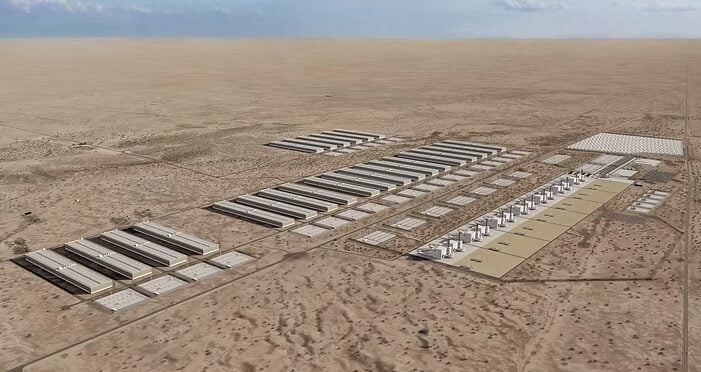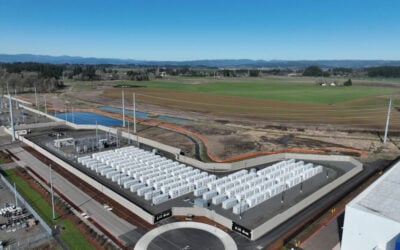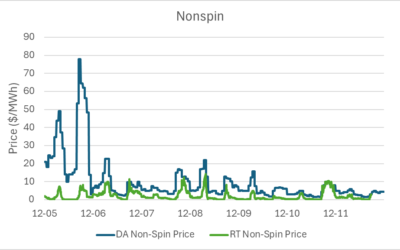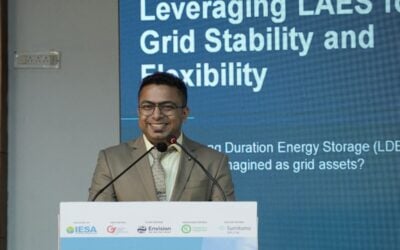
Three companies, Pacifico Energy, Zenith Volts, and Fermi America have begun expanding power generation and energy storage capabilities for US data centre development.
In a February guest blog for Energy-Storage.news, William Derasmo, partner at US law firm Troutman Pepper Locke, noted that data centres are expected to account for 9% of the US power demand in five years’ time.
According to the 2025 State of Reliability report by the North American Electric Reliability Corporation (NERC), approximately 1,500 MW of data centres were disconnected simultaneously and unexpectedly from the bulk electric system (BES) in 2024 due to a transmission line fault.
Such a significant load loss is comparable to a large nuclear power plant suddenly coming online, resulting in an imbalance due to excess system generation.
Try Premium for just $1
- Full premium access for the first month at only $1
- Converts to an annual rate after 30 days unless cancelled
- Cancel anytime during the trial period
Premium Benefits
- Expert industry analysis and interviews
- Digital access to PV Tech Power journal
- Exclusive event discounts
Or get the full Premium subscription right away
Or continue reading this article for free
Due to the rapid construction of data centres, there is a need for generation and storage assets to keep pace.
Pacifico, Zenith and Fermi are all taking unique approaches to this issue, each involving the pairing of battery energy storage systems (BESS) with other generation and storage technologies. One other key similarity is the large amounts of land used in all three projects, which allows for future scaling. One approach may prove better, but time will ultimately tell.
Pacifico developing 5GW of off-grid power for data centres
Japanese renewable energy developer Pacifico Energy has announced plans for its GW Ranch Project, an off-grid power generation campus combining a total of 5GW of gas turbines and battery storage to support hyperscale data centres in Texas, US.
GW Ranch aims to deliver 1GW of power in 2028 and 5GW in 2030.
The project will have 5GW of dedicated off-grid capacity powered by natural gas and 1.8GW of energy storage.
In development since early 2024, GW Ranch is sited within over 8,000 acres in Pecos County, Texas, and will take an “off-grid approach” to “bypass grid interconnection delays and regulatory bottlenecks.”
As Pacifico states, the project has started the permitting process with the Texas Commission on Environmental Quality (TCEQ). It is set to meet all environmental regulatory requirements, and has the support of local officials.
Pacifico highlights that the project will be used for AI infrastructure and other power-intensive industries. Since GW Ranch is not connected to the grid, it will allow data centre operators to launch and scale quickly.
GW Ranch is also expected to create thousands of construction jobs, generate local tax revenue, and drive long-term investment in regional infrastructure and the community.
Constantyn Gieskes, Vice President at Pacifico Energy, said of GW Ranch:
“Every aspect of the project has been designed to solve problems with the status quo in data center development. By building off-grid and working hand-in-hand with local officials, we’re delivering the speed, reliability, and responsible development that our customers and communities both demand.”
In June, independent power producer (IPP) CleanCapital acquired a 27MW solar and 25MWh battery storage portfolio across Massachusetts and California, from Pacifico.
Zenith Volts receives approval for scalable New Mexico data centre
Data centre construction company Zenith Volts has been approved by the Chaves County Commission for a “state-of-the-art” 300-acre data centre project near Roswell, New Mexico.
The project is designed to support 1.25GW or more of power capacity with expandable land resources and is expected to be operational by November 2027.
According to Zenith, the approved 8,500-acre site will integrate solar, natural gas generators, modular solar-thermal hybrid systems, a 250-acre battery energy storage system (BESS) and geothermal cooling for efficiency.
The data centre will support over 600 server racks with 1.25GW or more capacity and expandable land for future growth.
The company says the project will create 140 full-time jobs and position Chaves County as a technology and energy hub.
Zenith is headquartered in Cheyenne, Wyoming and is looking for technology companies, cloud service providers and “AI innovators” to join as anchor partners in shaping the facility’s computing needs.
Fermi America secures construction partners for 11GW private AI grid
Fermi America, in partnership with the Texas Tech University (TTU) System, is working with construction firms Parkhill and Lee Lewis to create a private grid supporting AI energy consumption.
Lee Lewis and Parkhill are joining a team of experts to develop the 11GW private grid in Amarillo, Texas.
Parkhill will design infrastructure solutions to integrate with Fermi’s expansion plans and Lee Lewis will build and manage the site.
Fermi was co-founded by former US Energy Secretary Rick Perry. In addition to energy storage, solar power, and natural gas, the company is looking to include new nuclear power at the site.
When initially announcing Fermi and TTU’s partnership, the company said it was answering US president Donald Trump’s “call to deliver global energy and AI dominance.”
The administration has taken a strong stance on supporting AI development in the US, with the president issuing executive orders such as the ‘Removing Barriers to American Leadership in Artificial Intelligence’ order.
The president has also offered broad support for nuclear power, with the ‘Deploying Advanced Nuclear Reactor Technologies for National Security’ executive order.
Fermi positions itself as all-in on the president’s commitments to these technologies. Others in the government, such as US Congressman Ronny Jackson, though positioning the project in a sort of Cold War familiarity against China, believe Fermi and TTU will begin a “new chapter of high-impact investment in the Texas Panhandle.”
Aside from energy production, Fermi says the partnership will greatly improve the TTU System and advance its mission through academic and research opportunities, as well as workforce training and placement initiatives.
Geotechnical work has already begun on the campus, which is expected to deliver 1GW of online power by the end of 2026.





